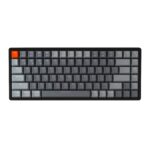The DPI button on your mouse is a handy tool for adjusting sensitivity on the fly. Changing your mouse DPI lets you quickly switch between precise and fast cursor movements. This can be especially useful for gamers who need different sensitivity levels for various in-game actions.
Many modern mice come with built-in DPI buttons. These allow you to cycle through preset DPI settings without opening software. Each click of the button shifts to a new DPI level, often indicated by a color change on the mouse.
If your mouse lacks a physical DPI button, don’t worry. You can still adjust sensitivity through your operating system or mouse software. This gives you fine-tuned control over your cursor speed for different tasks.
| DPI Range | Best For |
|---|---|
| 400-800 | Precision work |
| 800-1600 | Everyday use |
| 1600+ | Fast-paced gaming |

Mastering Your Mouse’s DPI Button
Many modern mice come equipped with a DPI button, offering on-the-fly sensitivity adjustment. This can be incredibly useful for gamers and anyone who needs precise cursor control. Here’s a breakdown of how to use your mouse’s DPI button effectively:
What is DPI?
DPI stands for “dots per inch.” It measures your mouse’s sensitivity. A higher DPI means the cursor moves further on the screen with the same physical mouse movement. Essentially, it controls how fast your cursor travels.
Locating the DPI Button
The DPI button’s location varies depending on your mouse model. It’s often found:
- Behind the scroll wheel: This is a common placement for DPI buttons.
- On the side of the mouse: Some mice have DPI buttons on the side, typically near the thumb rest.
- On the bottom of the mouse: Less common, but some mice have DPI buttons on the underside.
Refer to your mouse’s user manual if you’re unsure where to find it.
Using the DPI Button
- Press the DPI button: Each press of the button cycles through the available DPI settings.
- Visual indicator: Many mice have an LED indicator that changes color or flashes to indicate the current DPI setting.
- Software customization: Some mice come with software that allows you to customize the DPI levels and button behavior.
When to Adjust DPI
- Gaming:
- High DPI: For fast-paced games where quick reflexes are needed (e.g., first-person shooters).
- Low DPI: For games that require precision aiming (e.g., snipers in shooting games).
- Graphic design and photo editing:
- High DPI: For general navigation and moving between elements.
- Low DPI: For fine-tuning details and making precise selections.
- Everyday use:
- Find your sweet spot: Experiment with different DPI levels to find what feels most comfortable for general use and browsing.
Additional Tips
- Create DPI profiles: Some gaming mice allow you to create profiles with different DPI settings for different games or applications.
- Combine with in-game sensitivity: Adjust your in-game sensitivity settings in conjunction with your mouse DPI for optimal control.
- Consider your mousepad: The surface of your mousepad can affect how your mouse tracks. Experiment with different mousepads to find what works best for you.
- Practice and muscle memory: It takes time to adjust to new DPI settings. Practice and build muscle memory for consistent aiming and cursor control.
By understanding how to use your mouse’s DPI button effectively, you can optimize your cursor control for gaming, productivity, and everyday use.
Top Mice With DPI Buttons
Here’s a table featuring some of the top mice with DPI buttons, known for their performance, features, and ergonomics:
| Mouse | DPI Range | Key Features | Ideal For |
|---|---|---|---|
| Logitech G502 X PLUS | 25,600 DPI | LIGHTFORCE hybrid switches, HERO 25K sensor, 13 programmable buttons | Gaming, productivity |
| Razer Basilisk V3 Pro | 30,000 DPI | Razer Focus Pro 30K Optical Sensor, 11 programmable buttons, wireless charging | Gaming, productivity |
| Corsair Dark Core RGB Pro SE | 18,000 DPI | Wireless, Qi wireless charging, 8 programmable buttons, comfortable grip | Gaming, everyday use |
| SteelSeries Rival 710 | 16,000 DPI | OLED display, tactile alerts, modular design, TrueMove3 sensor | Gaming, enthusiasts |
| Razer DeathAdder V3 Pro | 30,000 DPI | Razer Focus Pro 30K Optical Sensor, ergonomic design, lightweight | FPS gaming, general use |
| Glorious Model O Wireless | 19,000 DPI | Lightweight honeycomb design, BAMF sensor, long battery life | Gaming, those who prefer lighter mice |
| Roccat Kone XP | 19,000 DPI | 15 programmable buttons, 4D Krystal Wheel, ergonomic design | Gaming, MMO/MOBA players |
| HyperX Pulsefire Haste | 16,000 DPI | Lightweight honeycomb design, TTC Golden micro dustproof switches, flexible HyperFlex cable | FPS gaming, value-oriented users |
Note: This is not an exhaustive list, and many other excellent mice with DPI buttons are available. The best choice for you will depend on your specific needs, preferences, and budget.
Key Considerations:
- DPI Range: Choose a mouse with a DPI range that suits your needs. Gamers often prefer higher DPI for faster movements, while those who need precision may prefer a lower DPI.
- Sensor Quality: A good sensor ensures accurate tracking and responsiveness. Look for mice with reputable sensors from manufacturers like PixArt, Razer, or Logitech.
- Ergonomics: Consider the shape and size of the mouse to ensure a comfortable grip for extended use.
- Wired vs. Wireless: Wireless mice offer freedom of movement, but wired mice provide a more stable connection and don’t require batteries.
- Additional Features: Some mice offer extra features like programmable buttons, RGB lighting, adjustable weights, or specialized grips.
- Price: Set a budget and choose a mouse that offers the best value and features for your needs.
Understanding DPI and Its Importance in Mice
DPI plays a crucial role in mouse performance and user experience. It affects cursor movement speed and precision, impacting gaming and everyday computer use.
Defining DPI and CPI
DPI stands for dots per inch. It measures how many pixels your cursor moves for each inch you move your mouse. CPI (counts per inch) is often used interchangeably with DPI, though technically they’re slightly different.
A higher DPI means your cursor moves farther with less physical mouse movement. For example, a 1600 DPI mouse moves the cursor twice as far as an 800 DPI mouse for the same physical distance.
Most modern mice allow you to adjust DPI settings. This lets you customize sensitivity to your preferences and tasks.
DPI in Gaming Mice
Gaming mice often boast very high DPI capabilities. Some models offer up to 26,000 DPI. However, most gamers use much lower settings.
Different game genres benefit from varied DPI settings:
- First-person shooters: Lower DPI (400-800) for precise aiming
- Strategy games: Higher DPI (1000-1600) for quick map navigation
Many gaming mice feature a DPI button. This allows you to switch between preset DPI levels on the fly.
The Impact of DPI on Mouse Sensitivity
DPI directly affects mouse sensitivity. Higher DPI increases cursor speed, while lower DPI decreases it.
Advantages of high DPI:
- Quick cursor movement across large screens
- Useful for wide sweeping motions
Benefits of low DPI:
- More precise control for detailed work
- Better for small, accurate movements
Your ideal DPI depends on factors like:
- Screen resolution
- Personal preference
- Type of work or game
Experiment with different settings to find what works best for you. Many users prefer lower DPI for everyday tasks and adjust upwards for specific needs.
| DPI Range | Typical Use Cases |
|---|---|
| 400-800 | FPS gaming, precision work |
| 800-1200 | General use, office work |
| 1200-1600 | Large screens, strategy games |
| 1600+ | Ultra-high resolution displays |
Adjusting DPI Settings
DPI settings control how fast your mouse pointer moves across the screen. Changing these settings can improve your precision and comfort when using your computer.
Navigating DPI with the DPI Button
Many modern mice feature a DPI button for quick adjustments. This button is usually located near the scroll wheel or on the side of the mouse. Pressing it cycles through preset DPI levels.
Some mice have LED indicators that change color to show the current DPI setting. Others may display the DPI value on your screen when changed.
To use the DPI button:
- Locate the button on your mouse
- Press it to cycle through available DPI settings
- Observe the LED color change or on-screen display
- Test each setting to find your preferred speed
Razer, Logitech, and Corsair mice often include software to customize DPI levels and button functions.
Finding the Optimal DPI Setting
Your ideal DPI depends on your screen size, resolution, and personal preference. Higher DPI increases pointer speed, while lower DPI offers more precise control.
Start with these guidelines:
- For 1080p displays: 800-1200 DPI
- For 1440p displays: 1200-1600 DPI
- For 4K displays: 1600-3200 DPI
Experiment with different settings to find what feels most comfortable. You may prefer different DPIs for various tasks.
| Activity | Recommended DPI Range |
|---|---|
| General Use | 800-1200 |
| Gaming (FPS) | 400-800 |
| Gaming (MOBA/MMO) | 1200-1600 |
| Graphic Design | 1000-1600 |
Customizing DPI for Gaming and Work
For gaming, lower DPI often improves accuracy in first-person shooters. Higher DPI can benefit MOBA and MMO games where quick cursor movement is crucial.
To customize your DPI:
- Install your mouse manufacturer’s software
- Open the software and find DPI settings
- Create profiles for different games or applications
- Adjust DPI levels within each profile
- Assign DPI switch commands to mouse buttons
For work, higher DPI can increase productivity when navigating large spreadsheets or multiple monitors. Lower DPI helps with precise tasks like photo editing or CAD work.
Remember to save your settings after making changes. Test different configurations to optimize your mouse for both gaming and work tasks.
Technological Insights of DPI Buttons
DPI buttons allow users to adjust mouse sensitivity on the fly. These small switches integrate advanced sensor technology with user-friendly controls for precision and versatility.
Mechanics Behind DPI Adjustment
DPI buttons work by changing the mouse’s sensitivity settings. When pressed, they alter how many dots the cursor moves per inch of physical mouse movement. Higher DPI settings result in faster cursor speeds, while lower DPI slows it down.
DPI buttons typically cycle through preset sensitivity levels. Each press switches to the next level, often indicated by LED colors. This feature is particularly useful for tasks requiring different precision levels, like graphic design or gaming.
Most modern mice use optical sensors to track movement. These sensors capture images of the surface below at high speeds. The DPI setting determines how these images translate to cursor movement.
DPI and Mouse Hardware
The mouse’s hardware plays a crucial role in DPI functionality. High-quality optical sensors enable a wider DPI range and more precise adjustments. Some advanced mice offer DPI levels up to 16,000 or higher.
| Mouse Type | Typical DPI Range |
|---|---|
| Basic | 800 – 1600 |
| Gaming | 100 – 16000+ |
| Precision | 50 – 5000 |
Polling rate, measured in Hz, affects DPI performance. It determines how often the mouse reports its position to the computer. Higher polling rates paired with appropriate DPI settings can reduce input lag.
Wireless mice now offer DPI adjustments comparable to wired models. Battery life and signal strength can impact DPI consistency in wireless devices. Many gaming mice include onboard memory to store DPI profiles, allowing you to use custom settings on different computers.
Frequently Asked Questions
DPI buttons on mice offer customization options for cursor sensitivity. Users can adjust settings to match their preferences and tasks.
How does one adjust the sensitivity of a mouse using the DPI button?
To adjust mouse sensitivity, locate the DPI button. It’s often found near the scroll wheel. Press the button to cycle through preset DPI levels. Each press changes the cursor speed.
Some mice have LED indicators showing the current DPI setting. Others may require software to view the exact DPI value.
What steps are required to configure DPI settings on a wireless mouse?
For wireless mice, first ensure the device is connected and recognized by your computer. Look for a DPI button on the mouse. If present, press it to change settings.
Many wireless mice use companion software for DPI adjustments. Install the manufacturer’s software to access more detailed controls.
Can the mouse DPI be changed to a specific value, such as 800, and if so, how?
Yes, you can often set specific DPI values. This usually requires manufacturer software. Install the program for your mouse model.
Open the software and look for DPI or sensitivity settings. Enter your desired value, such as 800. Apply the changes to update your mouse’s DPI.
Is there a method to verify the current DPI setting of a mouse?
To check your mouse’s DPI, you have several options. Some mice display the current DPI on LEDs or a small screen.
For a software-based method, use your mouse manufacturer’s software. It often shows the current DPI setting. Online DPI calculators can also help estimate your mouse’s DPI.
What is the process to alter the DPI on a mouse for users of Windows 10 or Windows 11?
For Windows 10 and 11 users, changing mouse DPI involves similar steps. First, open the Settings app. Go to Devices, then Mouse.
Look for pointer speed settings. Adjust the slider to change sensitivity. For exact DPI control, use your mouse’s software.
How should one activate the DPI function on a mouse?
To activate the DPI function, first check if your mouse has a dedicated DPI button. It’s usually near the scroll wheel or on the mouse’s side.
If there’s no button, install the mouse manufacturer’s software. Open the program and look for DPI or sensitivity settings. Enable DPI adjustments through the software interface.
| DPI Range | Usage Scenario |
|---|---|
| 400-800 | Precision work |
| 800-1200 | General use |
| 1200-1600 | Gaming |
| 1600+ | Fast-paced gaming |







